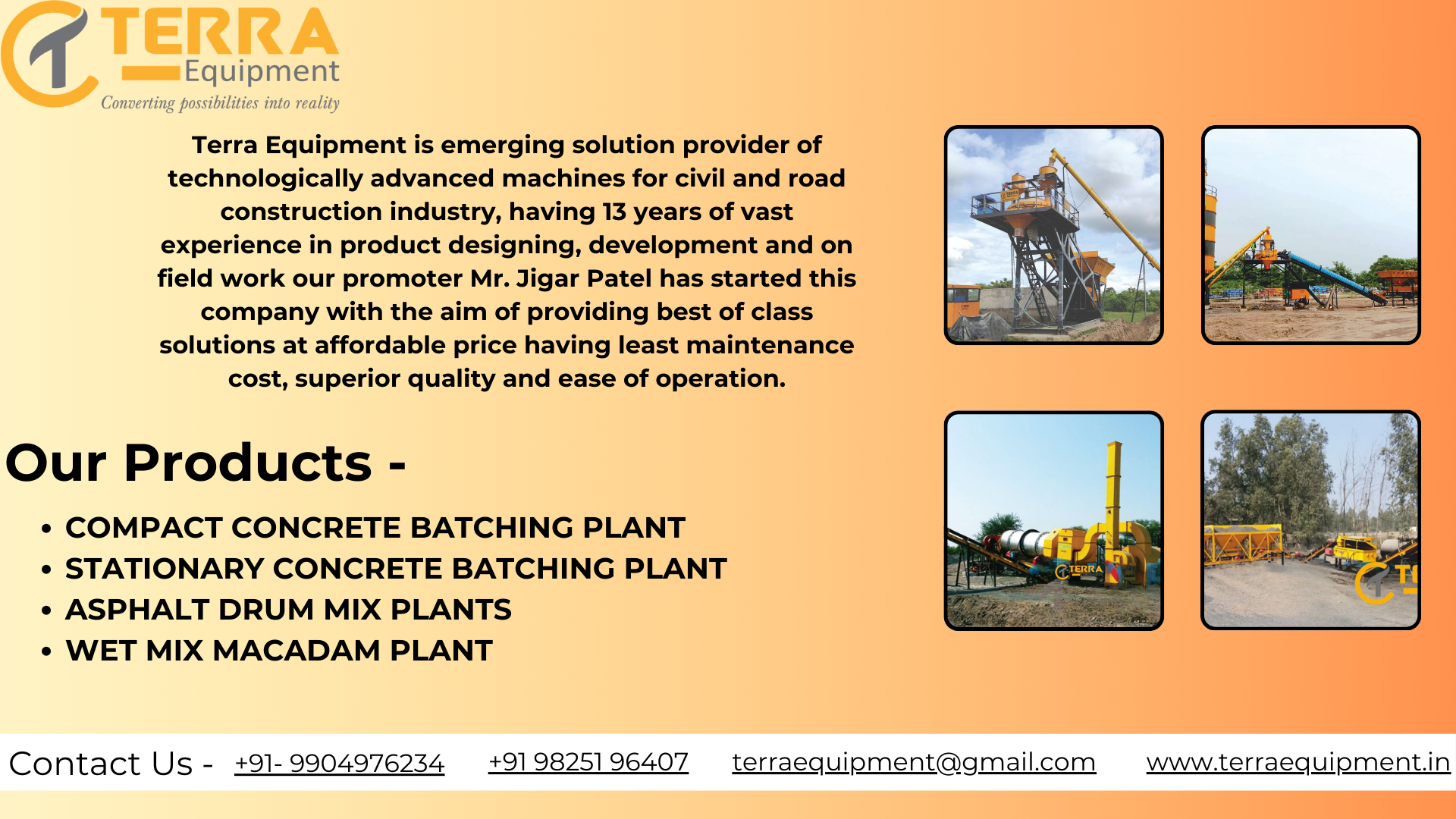Introduction — Reversible Concrete Mixer Manufacturers in India
Looking for dependable reversible drum concrete mixers that deliver consistent quality on site? Terraequipment engineers RD mixers (reversible drum) in 10/7, 14/10, and higher output classes with load-cell or digital batching, robust gear rings, and heavy-duty chassis. The drum reverses direction to switch from mixing to discharge, reducing cycle time and material loss. With skid or towable frames, water dosing control, and user-friendly panels, these mixers are ideal for contractors who want mobility, reliability, and accurate production shift after shift.
Working Principle & Process Flow — Reversible Drum Mixer
A reversible mixer uses a single drum rotating in two directions: forward rotation for homogeneous mixing of aggregates, cement, and water; reverse rotation to discharge the mix quickly through the drum blades. A PLC/digital panel sequences feeding, timed mixing, water dosing, and discharge. When paired with load cells or electronic weigh batching, you get consistent water–cement ratios and repeatable batches suited to slabs, beams, columns, and small precast work.
Applications & Benefits — Reversible Concrete Mixer
- Residential & commercial RCC works: slabs, columns, beams, footings.
- Road & small bridge concreting; rural PMGSY/UDAY projects.
- On-site concrete for villas, farmhouses, warehouses, and sheds.
- Small precast elements: pavers, kerbs, blocks with consistent batches.
- Remote/space-constrained sites needing towable, quick-to-deploy mixing.
- Mix–discharge in one drum → faster cycles and less spillage.
- Digital/load-cell batching → consistent quality, lower cement overuse.
- Heavy-duty ring gear & rollers → long life with minimal downtime.
- Towable chassis & compact footprint → easy relocation and set-up.
- Low kWh per m³ and simple maintenance → reduced operating cost.
Key Features — Reversible Concrete Mixer
- Forward–reverse drum with wear-optimized blades for rapid mixing and clean discharge.
- Option of digital or load-cell weigh batching with preset recipes and accurate water dosing.
- Rugged ring gear, roller track, and reinforced drum mouth for long service life.
- 12–15 HP engines or 3-phase electric drive with reliable starter panels and safety interlocks.
- Skid or towable frame, swivel chute, and hopper lift for fast feeding and placement.
Top Manufacturers & Suppliers in India
While choosing reversible concrete mixer manufacturers, evaluate drum build, ring gear quality, bearing alignment, batching accuracy, and after-sales. Terraequipment supplies contractor-grade reversible mixers with robust steel sections, precision machining, and optional electronic batching. You also get commissioning, operator training, and responsive spares support across India—helping you pour on schedule with predictable quality.
Maintenance & Safety Tips — Reversible Mixer
Monthly / Quarterly
- Grease drum rollers, check ring gear wear, and verify blade clearances; replace worn liners promptly.
- Calibrate load cells/digital meters and water flow meters for accurate batching certificates.
- Inspect electricals: contactors, emergency stop, earthing; verify guards and labels are intact.
Operating Best Practices
- Charge by sequence (aggregate → cement → water) and follow timed cycles for repeatable quality.
- Keep drum inside clean; wash after each shift to avoid hardened build-up at the mouth.
- Use chocks on slopes, maintain safe loading zones, and never open guards while drum is rotating.
FAQs — Reversible Concrete Mixer
Q1 What output can I expect from a reversible mixer?
Q2 Is a reversible mixer suitable for M25–M30 concrete?
Q3 Do I need load-cell batching or is digital volume enough?
Q4 Electric vs. diesel—what should I choose?
Q5 Can I pour directly into wheelbarrows or pumps?
Get in Touch
Terra Euipment • We’re here to help
Relevant Tags
- Reversible Concrete Mixer Manufacturers in India
- Reversible Concrete Mixer Manufacturers Near Me
- Reversible Drum Type Concrete Mixer with SCADA
- Reversible Drum Type Concrete Mixer Price
- Reversible Concrete Mixer Manufacturers in Tamilnadu
- Pan Type Concrete Mixer
- Drum Mixer Concrete
- Concrete Mixer Manufacturers in India
- Reversible Drum Mixers Machine
- Reversible Concrete Mixer Manufacturer from Ahmedabad
- 10/7 Reversible Concrete Mixer Price in India
- Digital Batching Reversible Concrete Mixer
- Best Reversible Concrete Mixer Price List India
- Portable Reversible Drum Mixer
- Contractor Grade Reversible Drum Mixer

